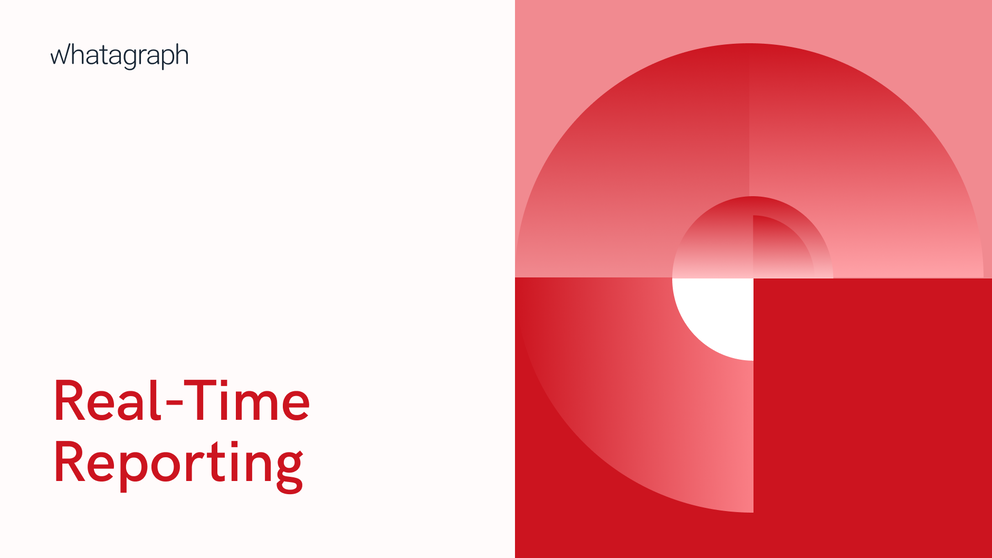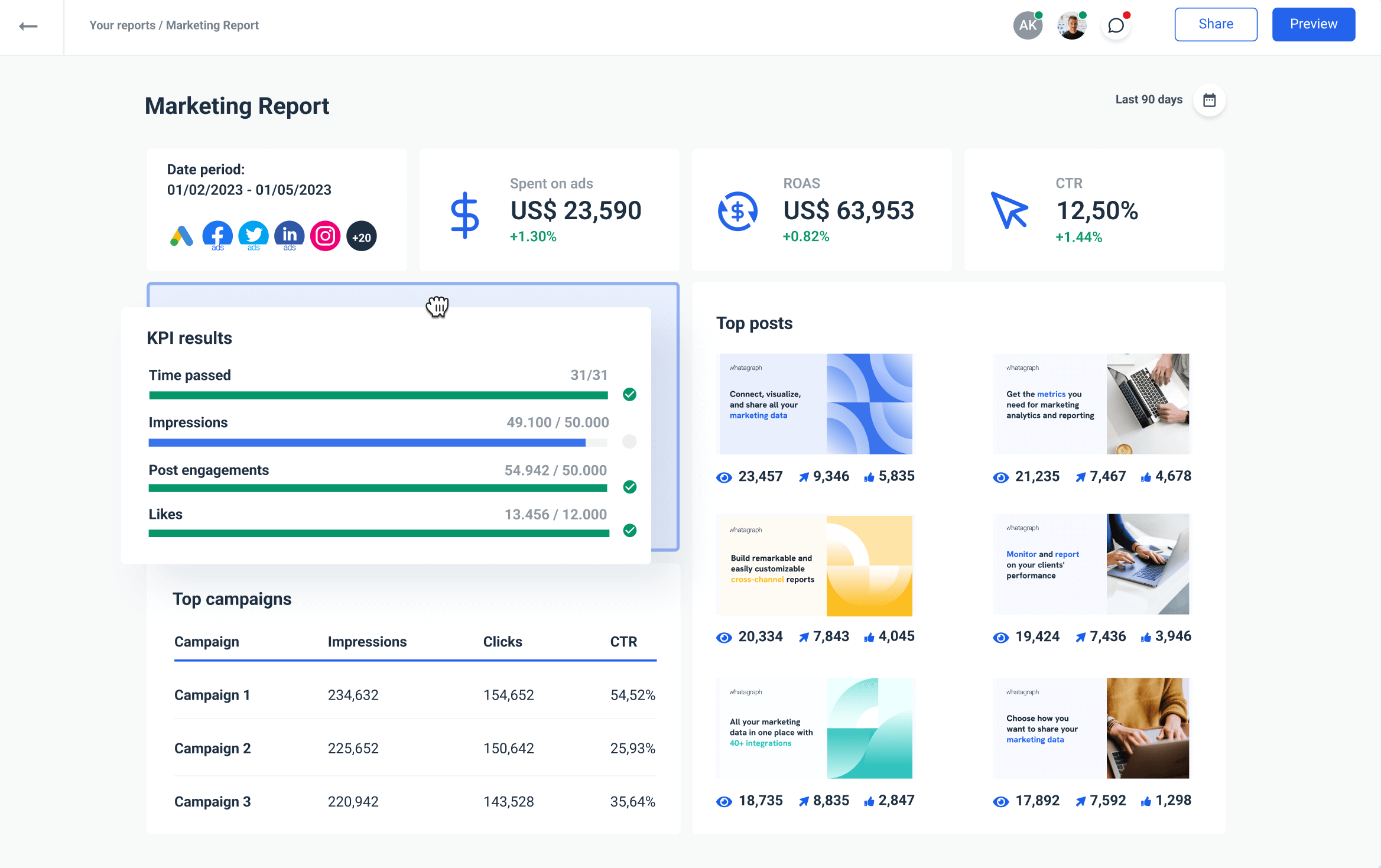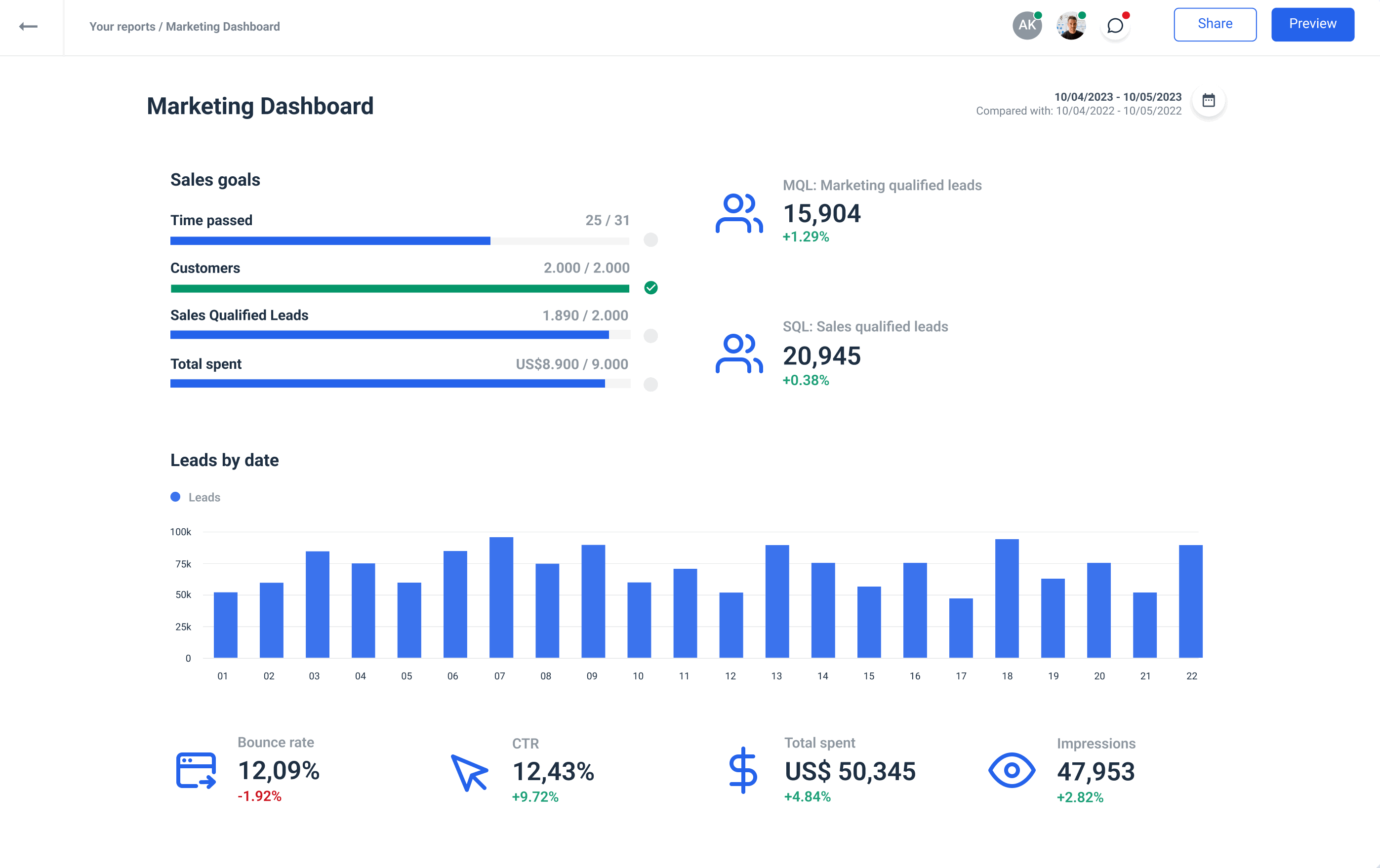Benefits of Real-Time Reporting for Agencies
Whether you’re an account manager who has to create weekly or monthly performance reports for your clients, an executive who has to review those reports and align your marketing strategy accordingly, or a small business owner who has to do both – you can majorly benefit from real-time reporting even if you don’t think so yet.

Jun 27 2019●6 min read

Whatagraph allows you to easily create real-time reports now with even more flexibility than before. So let’s learn more about this feature and what it can do for your business.
What is real-time reporting?
Real-time reporting is a business intelligence (BI) feature that enables users to check the status of their performance at any given moment to get the most up-to-date results possible. Simply put, looking at real-time data and reporting on it is the easiest way for businesses to make decisions fast.
How is it different from static reports?
For one, real-time reports are shared online and can be accessed anywhere, anytime, by anyone with a valid link. Static reports, sometimes also called batch reports, are generated periodically (daily, weekly, monthly…) and generally come in PDFs or another downloadable file format.

Secondly, whereas static reports hold historical data that showcases performance results for chosen criteria within a specific date range, real-time reports update continuously to display the most current data.
Benefits of real-time reporting
The main benefit of real-time reporting is that it saves time for everyone. And, as we all know very well, time is dollars, euros, pounds, pesos, you get the idea. It provides more clarity and speeds up course correction. See how real-time reports benefit different stakeholders:
For agencies
The main benefit of real-time reporting is that it saves time for everyone. And, as we all know very well, time is dollars, euros, pounds, pesos, you get the idea. It provides more clarity and speeds up course correction. See how real-time reports benefit different stakeholders:
- Minimize manual work – real-time reports work on a “set it and forget it” basis where you only really need to build the report once. As long as you connect all the right sources, include relevant KPIs and metrics, and share the link with your client, you won’t have to build reports every time a performance meeting is coming.
- Increase transparency and trust – by giving your client access to view their performance data at any time you create a shared, collaborative experience rather than something that is delivered to them on agreed deadlines.
- Ace your client meetings – a progress meeting shouldn’t be the first time your client gets to review the data. With a real-time report, you can give them time to digest the performance of their marketing campaigns, develop some questions, and then present the final numbers once you’re all on the same page.
- View specific data: Real-time reporting can provide you with the most recent information on what's happening on your website at that moment. It also allows you to review the number of active users and activities at specific times, comparing different metrics based on various factors.

What’s more, you can easily switch between date ranges and look at performance in different time frames. If you’re looking at weekly data and suddenly they’d like to see the whole month, you can seamlessly pull up those numbers within the same report.
For clients or end-users
- Cut out the middleman – real-time reports provide a sense of ownership of your real-time data analytics as you can access the report at any time without asking someone to generate it for you. This could be achieved with automated reports as well, but you still wouldn’t have the flexibility of viewing it any time you like or filtering different date ranges.
- Easily share between departments – if you represent a large enterprise, you know that sharing information between departments and team members isn’t as easy as it sounds. Emails get lost, ignored, etc. With one link and live reports that update automatically, you can ensure all your departments have equal access to information.
Speed up your decision-making process – with real-time reporting, you don’t have to wait to get updated KPI data delivered to you to make data-driven business decisions. Having the most current available data on you real-time dashboard, you can adjust your strategy much faster if you don’t see desired results.
Whatagraph’s Real-time Dashboard
If you’re looking for marketing reporting software for your agency, try Whatagraph.
Whatagraph is an all-in-one platform for connecting, visualizing, and sharing marketing data that allows you to combine data from multiple sources into a detailed real-time dashboard.

These sources include the most popular web analytics platforms, such as Google Analytics 4; paid advertising, such as Google Ads and Bing Ads, social media like Facebook, LinkedIn, and Instagram, SEO tools like Google My Business, Ahrefs, and Semrush, email marketing software like Klaviyo and Mailchimp, and CRMs like HubSpot and Salesforce.
But if you want to connect a source that is not among the supported platforms, we also have a custom API, as well as an option for you to export your data to Google Sheets or BigQuery data warehouse and use them as a source to visualize your data in a real-time dashboard.
This feature, as well as the ability to create cross-channel reports in just a few steps, really makes Whatagraph stand out from more basic reporting tools.
Users can create their real-time dashboard from scratch using our drag-and-drop builder or pick one of the pre-made templates from the library and modify it by their needs.
Conclusion
While real-time reporting is impressive in its own way, static reports that hold historical data are by no means obsolete. In fact, many professionals suggest basing your long-term strategy on historical data rather than real-time information.
Our recommendation – use both to get the most thorough and actionable evaluation of your performance. Whatagraph helps you do just that.
Sign up for a free trial and see how easy it is to report on real-time data with Whatagraph dashboards and reports.

WRITTEN BY
Gintaras BaltusevičiusGintaras is an experienced marketing professional who is always eager to explore the most up-to-date issues in data marketing. Having worked as an SEO manager at several companies, he's a valuable addition to the Whatagraph writers' pool.